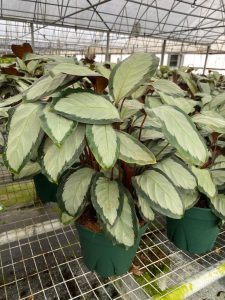The Dazzling Diversity of the Calathea Picturata

Calathea Picturata
Calathea Picturata, with its silver heart and mosaic patterns, is a small perennial clumper. It stands 10-30 cm tall with oblong leaves, 8-13 cm long, featuring a glossy green face and a purple back. The leaves boast unique silver bands and a serrated green trim.
Propagation and Cultivation:
Propagation is commonly done by division or rhizome cutting, usually between May and August, but it is best done in spring. When dividing, leave 2 to 3 shoots per clump, trim some or most of the old leaves, and treat the cut roots with a disinfectant to prevent rot and increase the survival rate.
The best potting soil is fertile, loose, and well-ventilated, with a neutral to slightly acidic composition. The growing medium can be made from decomposed manure, perlite, high-quality pond mud, or coconut coir in a ratio of 4:2:4. During the growing period, avoid excessive fertilization; for soil-less cultivation, apply nutrient solution once a month. In summer, mist the plant more often to maintain 70% to 90% air humidity to prevent leaf curling and premature aging. The plant should be kept in a shaded environment.
During cultivation, the main pests include spider mites, locusts, and cabbage worms, which can be controlled by spraying with a 1500 to 2000 times solution of 50% trichlorfon or phoxim. Diseases such as white rot can be prevented by mixing 0.2% of 70% pentachloronitrobenzene into the potting soil.
Calathea Picturata: A Versatile Indoor Beauty
The Calathea Picturata, with its attractive plant shape and enchanting leaf colors, is a stunning addition to any indoor decor. Its beautiful and elegant patterns make it suitable for various indoor settings. It can be grown as a small potted foliage plant, perfect for windowsills, desks, and indoor garden arrangements. It also thrives as a hanging basket or as an accent leaf in cut flower displays, and it can be mixed with other Calatheas to showcase its unique charm. Outdoors, it can serve as an ornamental plant in shady, moist gardens or as part of a flower bed display.











